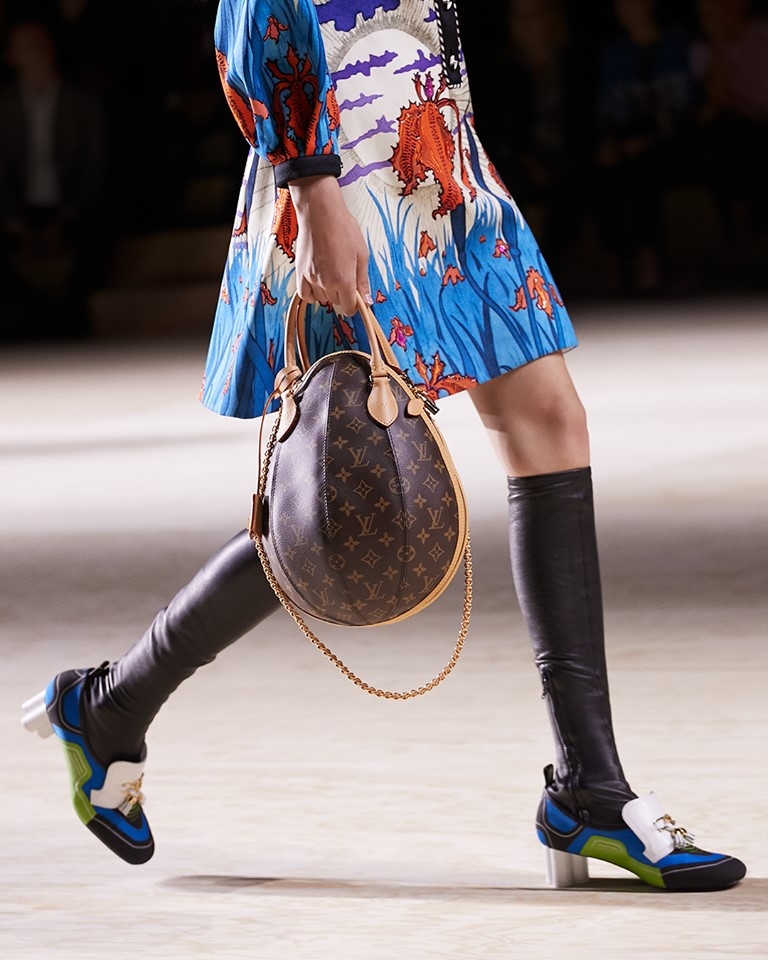
The new LV Egg bag in Monogram from Nicolas Ghesquière’s latest Louis Vuitton Collection; @Louis Vuitton
Louis Vuitton, the world’s biggest luxury brand, closed Paris fashion week with a collection steeped in sentimental affection for the city’s belle époque era of 1871 to 1914.
If fashion channels the mood of the times, it is striking when a house whose exclusive logo-stamped luggage has made it a global byword for aspirational living declares the past a more appealing reference than the future.
Especially when the designer is Nicolas Ghesquière, whose mood boards are usually a blend of science fiction costumes, Japanese anime motifs and landmarks of modernist architecture.
The collection was a love letter to a postcard version of Paris: the age of Folies Bergère and the Eiffel Tower, curlicued lamps on the banks of the Seine and art nouveau metro signs.
Ghesquière said he wanted to explore “dandyism, and those particular snobberies that would later become what is known as French elegance”.
The clothes channelled the mood music of Paris at its most charming, rather than being literal in their retro-reference.
Ghesquière’s futuristic clothes tend to be what is referred to politely, in fashion-speak, as “costume-adjacent”, but this collection was extremely wearable and immediately desirable.
High-waisted, wide-legged trousers were worn with silk blouses layered under tailored blazers. Belted trench coats and clean-lined shifts were worn with block-heeled loafers or moccasins.
Handbags were timelessly elegant – and even sensibly sized, rather than minuscule – with graceful top handles.
The show took place in a courtyard of the Louvre, where a vast video screen showed Scottish musician Sophie, who chooses not to disclose a gender identity, performing It’s Okay to Cry, a song described in a Guardian review as “a power ballad about an identity-based struggle … hideous and heartrending, an overacted meditation on self-acceptance that could easily prompt real tears”.
In a blockbuster commercial evening, this was the only nod to the alternative aesthetic leanings for which Ghesquière is usually known.
Louis Vuitton was valued in May at $39.3bn (£32bn), putting it well ahead of Chanel, its closest competitor – and it is getting bigger.
This year, the brand has had a series of major perfume launches, while ambitious plans for a greater slice of the “hard luxury” market, in watches and fine jewellery, are next.
guardian.co.uk © Guardian News & Media Limited 2010
Published via the Guardian News Feed plugin for WordPress.

